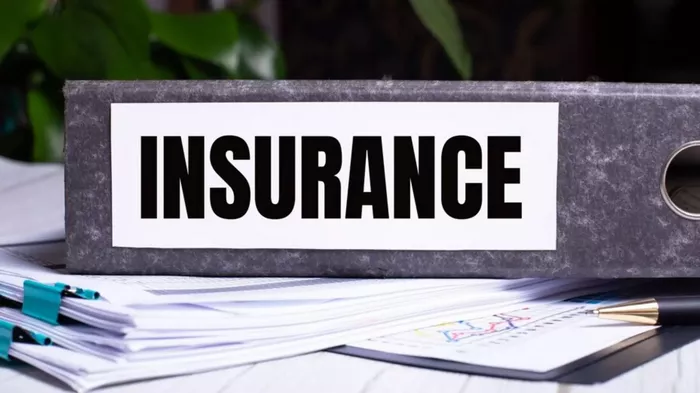Renters insurance is an essential financial tool for individuals who rent their homes or apartments. It provides coverage for personal property and liability in case of unexpected events such as fires, theft, or injuries. One important document you will come across when purchasing renters insurance is the declaration page. Understanding what a declaration page is, what information it contains, and why it is crucial can help renters make informed decisions about their insurance policies.
What is a declaration page?
The declaration page (often called a dec page) is the first page of your renters insurance policy. It summarizes the most important details of your coverage. The declaration page outlines the basic terms of your policy, the coverage you are entitled to, and the premiums you will need to pay. It acts as a reference point, providing both you and the insurance company with a clear understanding of the terms and conditions of the agreement.
The declaration page is usually one of the first documents provided when you sign up for renters insurance. It contains a variety of information that you need to review periodically to ensure that your policy still meets your needs. The page serves as a quick reference to the core elements of your policy.
Key Components of a Renters Insurance Declaration Page
The declaration page contains several key pieces of information that renters must know. Here are the main components:
1. Policyholder Information
The declaration page will contain the name and contact information of the policyholder. This is usually the person who purchased the insurance policy. It will include the policyholder’s full name, address, and possibly a phone number or email address.
2. Insurance Company Information
This section lists the insurance provider’s name, contact information, and policy number. It also often includes the company’s address and customer service phone number. This information is important if you need to contact your insurance company to file a claim or make any policy changes.
3. Policy Number
Each renters insurance policy has a unique policy number. This number is used to identify your policy and is required for any correspondence with your insurance company. Keep this number handy because you will need it if you need to file a claim or renew your policy.
4. Policy Effective Date and Expiration Date
The declaration page will clearly state the effective date and expiration date of your policy. The effective date is the date your renters insurance begins and the expiration date is the last day your insurance is in effect. This helps ensure that there are no gaps in your coverage.
5. Coverage Types and Limits
Renters insurance covers a variety of different risks, and the declaration page outlines the types of coverage you have, along with the coverage limits. The primary types of coverage include:
Personal Property Coverage: Covers your belongings, such as furniture, electronics, clothing, and other personal items, in the event of theft, fire, or vandalism. The declaration page will list the amount of coverage you have for personal property.
Liability Coverage: If someone is injured on your rental property and sues you, liability coverage will help pay for legal fees and medical expenses. The declaration page will show the amount of liability coverage included in your policy.
Loss of Use Coverage: If your rental property becomes uninhabitable due to a covered event (e.g., fire or flood), this coverage helps pay for temporary living expenses. The declaration page will indicate the coverage limit for loss of use.
6. Deductible Amount
The deductible is the amount you must pay out of pocket before your insurance coverage kicks in. The declaration page will list the deductible for your policy, which can vary depending on the coverage type. For example, you may have a separate deductible for personal property damage and liability claims.
7. Premium Amount
The premium is the amount you pay for your renters insurance policy, either annually or monthly. The declaration page will indicate the premium amount, along with how and when it is due. Premium amounts can vary depending on the level of coverage, the location of your rental property, and any discounts you may qualify for.
8. Additional Endorsements or Riders
In addition to the standard coverage, renters can purchase additional coverage through endorsements or riders. These may include things like flood insurance or high-value personal property coverage. If you have any additional coverage, it will be listed on the declaration page.
9. Exclusions
While the declaration page outlines your coverage, it will also mention any exclusions or situations that are not covered under your policy. For example, most renters insurance policies do not cover damage caused by floods or earthquakes unless you have purchased additional coverage. Understanding these exclusions is important to ensure you are adequately covered for your specific needs.
10. Policy Form
The declaration page will also state the type of policy form. Renters insurance policies typically fall into two main categories:
Named Perils: Covers only the risks specifically listed in the policy.
All-Risk (or Open Perils): Covers all risks except those specifically excluded.
This distinction is important when reviewing your coverage to ensure that you understand what risks are and are not included.
Why is the declaration page important?
The declaration page plays a vital role in helping renters understand the terms of their policy. Here are a few reasons why it’s important:
1. Clear and concise coverage
The declaration page gives a clear and concise overview of the coverage you have. By reviewing this page, you can quickly assess whether your policy covers all your needs or if your coverage needs to be adjusted.
2. Assist with claims
The declaration page serves as a reference for your insurance company if you need to file a claim. It contains important information such as your policy number, the type of coverage you have, and any deductibles you may need when filing a claim.
3. Ensure accuracy
Always verify that the information on the declaration page is accurate. This includes making sure your name, address, and coverage limits are correct. If you notice any discrepancies, you should contact your insurance company immediately to make corrections.
4. Provide legal protection
The declaration page outlines the terms of the agreement between you and your insurance company, including coverage and exclusions. This declaration page is essential for legal protection if a dispute arises between you and your insurance company regarding coverage under your policy.
How to Read a Renters Insurance Declaration Page
Reading your renters insurance declaration page may seem overwhelming at first, but by breaking it down into manageable sections, you can easily understand the key components. Here’s how you can read the page:
Start with the Basics: Look for your policyholder information, policy number, and the insurance company’s details. This will help you verify that the policy belongs to you and is from the correct provider.
Check Coverage Limits: Review the coverage types and limits to ensure they match your needs. If you have valuable items that aren’t fully covered, consider increasing your coverage or purchasing additional endorsements.
Understand Your Deductible: Make sure you understand how much you will need to pay out of pocket in the event of a claim. A higher deductible typically results in lower premiums, but it also means you’ll pay more before the insurance company covers the rest.
Verify the Premium: Confirm the premium amount and the payment schedule. This helps you keep track of your insurance costs and avoid missing payments.
Review Exclusions: Take note of any exclusions to understand what is not covered. If you are concerned about certain risks, like floods or earthquakes, consider purchasing additional coverage.
What happens if the information is incorrect?
If you notice any incorrect information on the declarations page, it is important to contact your insurance company as soon as possible. Errors on the declarations page, such as errors in address or coverage, can affect your claim and cause delays. Correcting errors early ensures that your policy is accurate and valid.
Conclusion
The declarations page is an important document for renters purchasing insurance. It is a summary of the key details of your renters insurance policy, including coverage type, limits, premiums, and deductibles. By reviewing the declarations page regularly, you can ensure that your insurance policy meets your needs and that you are adequately protected in the event of an unexpected event. Knowing how to read and interpret this page will help you make an informed decision about your renters insurance and give you peace of mind knowing that your belongings and liabilities are properly covered.



























